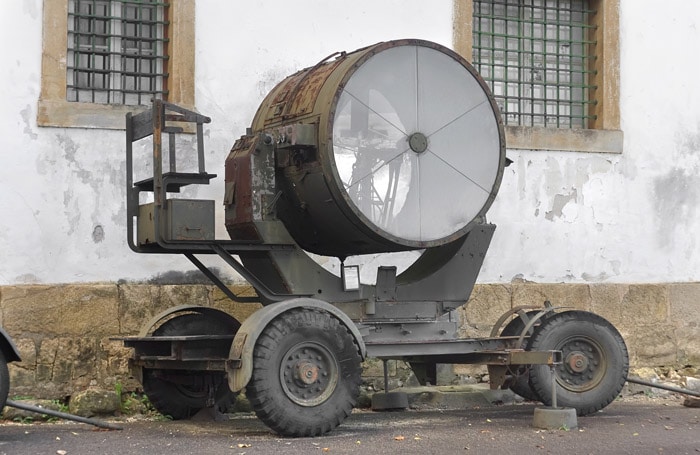With November the month that sees communities throughout Britain remember and pay tribute to members of our armed forces who died serving their country, it is perhaps also a fitting time to look back at the wartime history of towns and neighbourhoods.
Despite being an idyllic, rural village, Eversley was by no means removed from the turmoil brought about by the Second World War. Many parts of the country paid a high price in the destruction wrought by Luftwaffe air raids between 1940 and 1945.
Along with the fighter pilots of the RAF and radar, Britain’s best defence against night time bombing raids were huge ground-based searchlight teams and anti-aircraft batteries.
With Eversley a short distance from the then Arborfield garrison and Blackbushe airport, the village found itself home to a searchlight team from 1942 until the end of the war.

Troops from the 50th Searchlight Regiment set up camp at a site at Brickhouse Hill off the Fleet Road, which today is home to private company Eversley Storage. The company moved on to the site in the 1980s, but has always maintained an interest in Brickhouse Hill’s role in the war, with staff researching the subject.
Searchlights had a dual role in the battle against the bomber. With aircraft technology limited to eyesight and paper maps, bomber crews had to judge wind speed and drop time to improve their chances of hitting the target, a task that was made easier by flying low. However, this meant exposure to the powerful searchlight beams, increasing the chance of the aircraft being shot down by Ack-Ack crews.
Bomber pilots could reduce this risk by choosing to fly at higher altitudes, but this invariably made the job of successfully hitting a target that much harder.
Cath Hammond, spokesman for Eversley Storage, said that the searchlight crew had been based in Eversley in part due to fears the Nazis would try to use the A30 road as a makeshift runway during part of an aerial invasion of Britain.
To counter this, the government dug trenches and fixed stakes along the length of the road to deter aircraft landings, as well as siting searchlight units nearby in Eversley, Rotherwick, Caesar’s Camp and Cove.
Mrs Hammond said that the village’s military guests were warmly welcomed, with one household opposite the site able to connect itself to the searchlight team’s ample electricity supply.
She said that during a night time blackout many were able to profit from the powerful searchlights based around them: “The light cast from a searchlight site was so bright, in spite of its highly directed nature, that locals often reported being able to read their newspapers and books using the light-spill if they didn’t put their blackouts up.”
The civilian population, in turn, did their best to support the troops, who would often work eight-hour shifts manning the lights, by supplying them with tea and coffee as well as the use of bathrooms and telephones.
As the war went on, conditions at the site improved, and, after one solider set his tent alight in protest at the spartan living arrangements, troops were finally provided with pre-fabricated Nissen huts, and a tin-built latrine, which today stands as the last physical reminder of the site’s military heritage.
This article was written by Tim Tonkin and published in the 18 November 2011 edition of the Aldershot News and Mail newsgroup local papers and has been reproduced, here.
What would help you, now?
Return to the Press Area and find another article to read
Read a Household or Business article
Visit our FAQs area